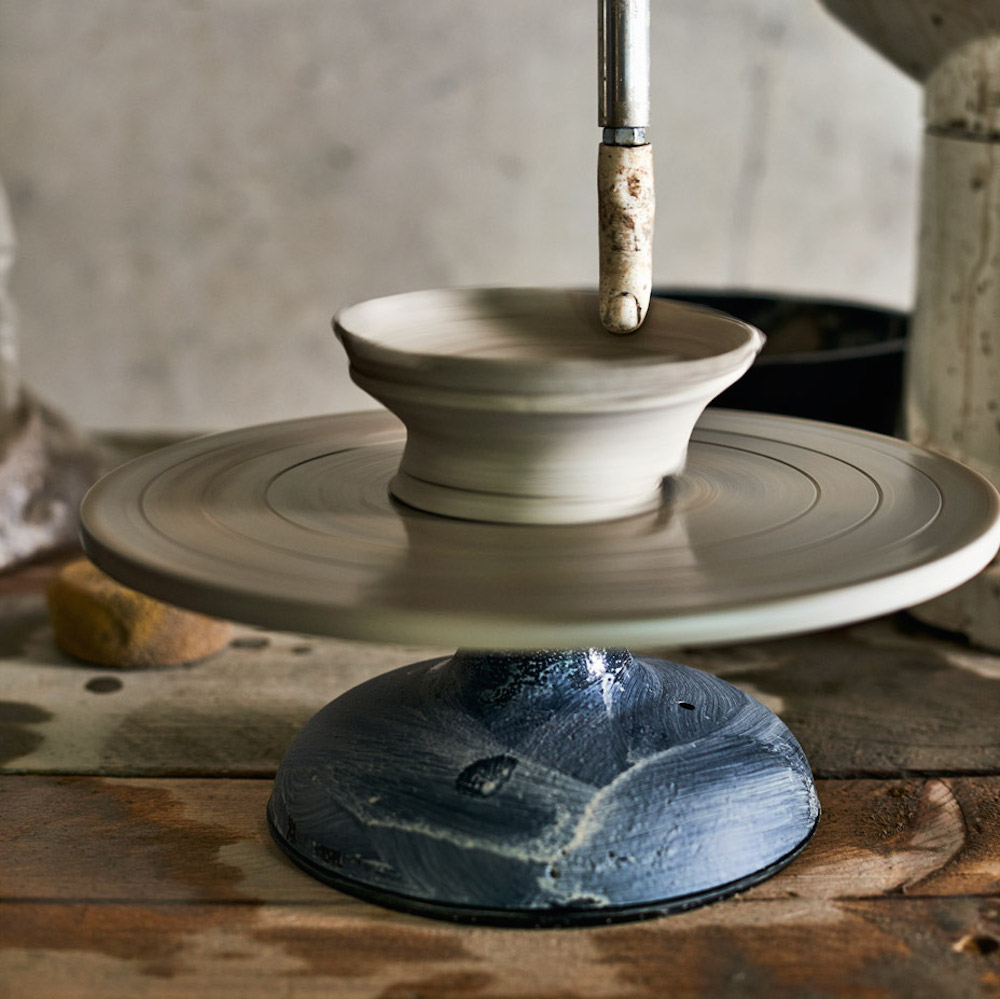LONDON, UK — It started with self-checkout at the grocery store, but automation has been growing over the last few years. It’s possible that robots could one day do much of the work of people. In the 1950s or 60s that may have sounded auspicious, but in today’s economic zeitgeist it seems more like a threat. I think it’s a widely shared fear. The critiques we see from some people about clay printers (for example) reveal an anxiety that a machine could replicate the wares of a human potter, and so people are exceedingly critical of any work these machines produce. It’s part job security, part fight for one’s soul.
Central Saint Martins Material Futures Graduate Charlotte Nordmoen designed a silicone human finger to jab directly at that fear. Her graduate project humanMADE uses a robotic arm powered by a program that tells the robot how to make simple vessels. More than that, the robot can mix and match different pottery features to create a variety of vases, sculpting them with its uncanny finger. The finger is a diabolical addition; it’s a reference to platitudes people use against automation. “Nothing can replace the human touch.” Is that so? Let’s give a robot an eerie index finger and see if you can really tell the difference as it works.
It can’t reflect on its work, so the robot isn’t adaptable, but you can see how Nordmoen is setting up a John Henry vs. the steam drill scenario in clay. Judging from the video, Nordmoen’s role has been reduced to dutifully cleaning up after the robot and sending its creations off to the kiln.
Like all good sci-fi, the metaphor has wide-reaching applications. This is a concern all of us will have to face soon, whether you’re a potter watching the above video, or a road worker watching a machine lay precise rows of brick, or a grocery store clerk, or my brothers and sisters in journalism who are editing stories written by a computer. Even as I write this, a WordPress plugin is critiquing me, telling me that the readability of my text could be improved. I’ve been a professional writer for twelve years and I’ve never once worked to the plugin’s satisfaction. How much longer until that thing becomes self-aware and decides to take its frustrations out on my career?

Reading all of this, you could assume that Nordmoen is like a grim, futurist John the Baptist, preaching about the coming techno-robotic apocalypse. She’s not trying to dance on our graves, rather she’s showing us an example of the concern in action so we can begin to conceptualize it. From the designer:
The project aims to go beyond the practical aspect of technological unemployment and to ask what happens if a robot takes on the role of an artisan? What does that mean for our notion of craft as something unique and handmade, in opposition to machine-made? What does artificial intelligence mean for design and authorship? Can machines ever truly replace us?
Forewarned is forearmed, so give her project a long, honest look and let us know what you think.
Bill Rodgers is the Managing Editor of cfile.daily.
What do you think of this experiment in contemporary ceramics? Let us know in the comments.



Rather remarkable and totally bizarre! While this machine may not be interesting to many, I have learned that new technologies take time to fit human life and sometime in the future they may hold secrets that we cannot see yet. An artist will be needed to make this more than it is now.
What a load of wasted time and energy! Not to mention the money. There are people starving and this gets built. And the results are horrible. Or am I supposed to think it’s all frightfully clever? It’s just a sick indulgence.